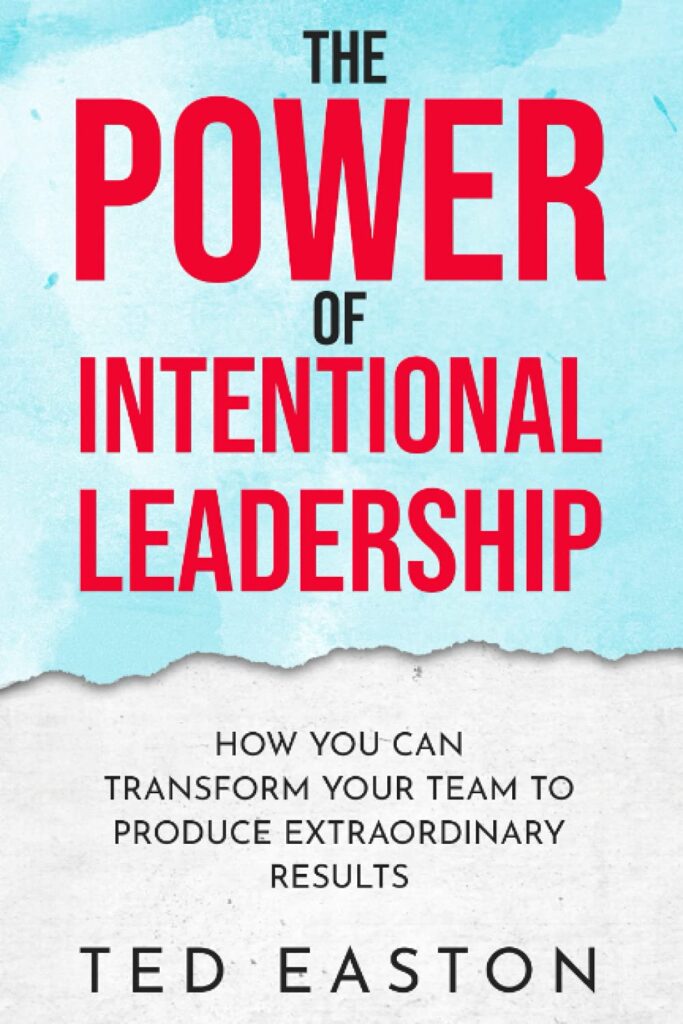
1 Line Summary
“The Power of Intentional Leadership: Achieving Extraordinary Results” is a book written by Ted Easton, which explores the process of setting clear goals, developing a plan to achieve those goals, and taking action to make them happen.
What Will You Learn
This book will teach you how to:
- Set clear goals
- Develop a plan to achieve your goals
- Take action to make things happen
- Be persistent and never give up
- Believe in yourself and your ability to succeed
Best Quotations from the Book
- “Intentional leadership is the process of setting clear goals, developing a plan to achieve those goals, and taking action to make them happen.”
- “The difference between ordinary and extraordinary is that little extra.”
- “The only way to predict the future is to create it.”
- “Leadership is not about being in charge, it’s about being of service.”
- “A leader is someone who has the ability to see the future and the ability to get others to see it with them.”
- “Leadership is about creating a vision, communicating that vision, and then motivating others to achieve it.”
- “The true test of leadership is not whether you take the right path, but whether you make the right decision when everyone else is taking the wrong path.”
Book Summary
Setting Clear Goals
- Understanding the Importance of Clear Goals: Clear goals provide a focused direction for both individual leaders and their teams. They create a sense of purpose and clarity, driving motivation and commitment toward a common objective.
- Defining Specific and Measurable Objectives: Effective goals are specific and measurable. Leaders should articulate exactly what they aim to achieve and establish metrics to evaluate progress and success.
- Aligning Goals with Vision and Values: Goals must align with the broader organizational vision and core values. This alignment ensures that the pursuit of goals contributes to the overall mission and reinforces the organizational culture.
- Breaking Down Goals into Achievable Steps: Large goals can be overwhelming. Break them down into smaller, manageable steps. This approach facilitates a gradual progression toward the end goal and reduces the risk of feeling daunted by the challenge.
Developing a Plan
- Assessing Current Resources and Capabilities: Leaders need to evaluate the resources, skills, and strengths available to them and their team. This assessment informs the planning process by identifying gaps and potential areas of development.
- Creating a Strategic Framework: A well-structured plan involves outlining the strategies and tactics required to achieve the defined goals. Leaders must consider timelines, resource allocation, and potential obstacles.
- Assigning Responsibilities and Accountability: Effective plans designate clear responsibilities to individuals or teams. Establishing accountability ensures that progress is monitored, and necessary adjustments can be made.
- Resource Allocation and Time Management: Allocate resources efficiently, balancing financial, human, and technological assets. Develop a timeline with milestones to track progress and ensure timely completion.
- Risk Assessment and Mitigation Strategies: Anticipate potential challenges and risks that could derail the plan. Develop contingency measures to address these issues, enhancing the plan’s resilience.
- Communication and Collaboration: Transparent communication is vital. Share the plan with relevant stakeholders and encourage input. Foster a collaborative environment where feedback is valued and adjustments can be made based on insights from diverse perspectives.
- Monitoring and Adaptation: Regularly monitor progress against milestones and metrics. If deviations occur, be prepared to adapt the plan without compromising the end goal. Flexibility is key to accommodating changing circumstances.
- Celebrating Milestones and Successes: Acknowledge and celebrate achievements along the way. This boosts morale, reinforces the team’s commitment, and provides a sense of accomplishment.
Taking Precise Action
- Clarity of Purpose and Vision: Effective leaders begin by defining a clear purpose and vision. This foundation provides a roadmap for the actions required to fulfill overarching goals.
- Overcome Analysis Paralysis: Avoid getting trapped in over-thinking or indecision. Embrace a balance between thoughtful analysis and timely action to prevent stagnation.
- Prioritize and Focus: As a leader, your time and resources are valuable. Prioritize your tasks based on their impact and urgency. Focus on the high-priority tasks that align with your goals and contribute to the most significant outcomes. Avoid spreading yourself too thin by delegating tasks that can be handled by others, allowing you to concentrate on tasks that demand your expertise.
- Take Decisive and Confident Action: Indecision can hinder progress. Once you’ve formulated your plan and assessed the options, take decisive action. Trust your judgment and expertise. Be confident in your decisions, even if they involve some level of risk. Effective leaders understand that calculated risks are often necessary for growth and innovation.
- Evaluate and Adjust: After taking action, it’s essential to evaluate the outcomes. Are you making progress toward your goals? If not, be prepared to adjust your approach. This step requires humility and a willingness to learn from both successes and failures. If something isn’t working, don’t hesitate to pivot or modify your strategy. Regular evaluation and adjustment ensure that your actions remain aligned with your goals and the evolving needs of your team.
- Resource Allocation and Execution: Allocate resources effectively to support the planned actions. Ensure teams have the necessary tools, skills, and support to execute tasks efficiently.
Being Persistent
- Cultivate Resilience: Embrace challenges as opportunities to learn and grow. Develop a resilient mindset that reframes setbacks as stepping stones toward success. Practice self-care, mindfulness, and stress management to maintain emotional equilibrium.
- Visualize Success: Create a vivid mental image of your goals achieved. Visualization enhances motivation and reinforces your commitment, helping you push through difficulties with a clear focus on the desired outcomes.
- Set Milestones: Break down larger goals into smaller milestones. Celebrate these incremental achievements, which provide a sense of progress and reinforce your persistence. Milestones also offer moments to reassess and adjust your strategy if needed.
- Seek Support and Mentorship: Reach out to mentors, peers, or coaches who can provide guidance and perspective. Surrounding yourself with a supportive network offers fresh insights, encouragement, and reminders that you’re not alone on this journey.
- Learn from Failures: View failures as valuable lessons rather than defeats. Analyze what went wrong, extract insights, and apply them to your future actions. A growth mindset turns setbacks into opportunities for improvement.
- Stay Adaptable: Flexibility is key. Adapt your approach when circumstances change. Persistence doesn’t mean rigidly sticking to a failing strategy; it involves evolving while keeping the ultimate goal in sight.
- Reflect on Purpose: Regularly reconnect with your underlying purpose and vision. This reaffirms your motivation and reignites the passion that drives your persistence.
- Lead by Example: Demonstrate unwavering persistence in your actions. As a leader, your behaviors set the tone for the entire team. Your perseverance becomes an inspiring model for others to emulate.
- Celebrating Small Wins: Recognize and celebrate incremental achievements along the way. These milestones reinforce progress and serve as reminders of the larger goal.
If you want to become a more effective leader and achieve extraordinary results, read “The Power of Intentional Leadership.”
Enlighten Yourself with “The Four Agreements“, “The 4 Disciplines of Execution“, “The 5 Levels of Leadership, “The Five Dysfunctions of a Team“, “Code of the Extraordinary Mind“, “Scrum: The Art of Doing Twice the Work in Half the Time” and “How Self Awareness Leads to Effective Leadership“.


Pingback: "The Four Disciplines of Execution": Book Summary